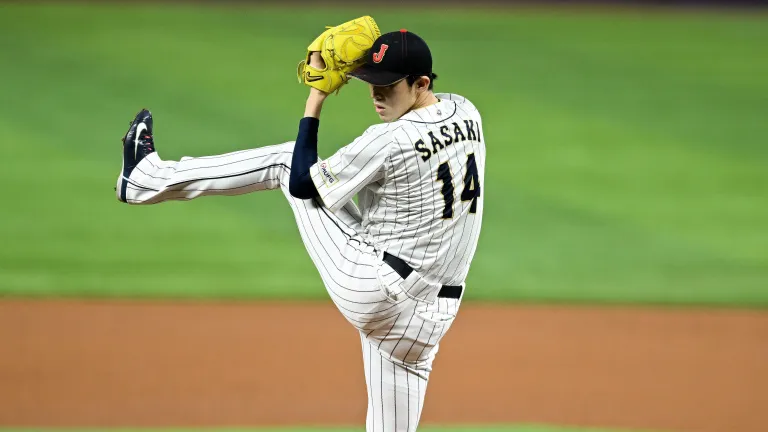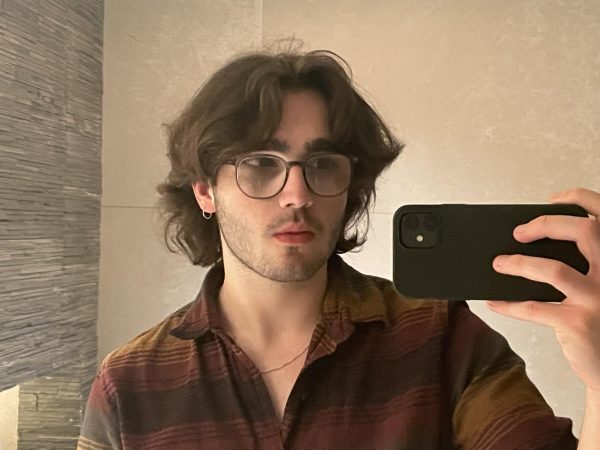The Nippon Professional Baseball (NPB) team, the Chiba Lotte Marines, recently announced that right-handed pitcher Rōki Sasaki will be posted to Major League Baseball (MLB), making him available to sign with an MLB team through the posting system.
Sasaki first gained international recognition at 20 years old, when he threw the 16th perfect game in NPB history, which included an NPB record 19 strikeouts. Since then, the 23-year-old has continued to make a name for himself in Japan and is now taking his talents to the United States. Standing 6-foot-4, Sasaki is feared on the mound. During his four seasons in the NPB, he had a 2.10 earned run average (ERA) in 394.2 innings pitched, with 505 strikeouts and only 88 walks. He boasts a three-pitch arsenal, including a four-seam fastball that can touch 102 mph, a splitter with elite movement, and an improving slider. Sasaki’s poise, mechanics, and command on the mound suggest that he has the ability to succeed in MLB, where he will face even tougher competition.
Sasaki has many potential suitors, with the clear favorites being the Los Angeles Dodgers. However, Sasaki’s journey to the MLB is not without obstacles, most of which stem from the complexities of the Japanese posting system and international amateur free-agent restrictions.
The Japanese posting system allows NPB players to move to MLB teams. When a player requests to be posted, their NPB team notifies the MLB Commissioner, and then MLB teams only have 45 days to negotiate a contract. If an agreement is reached, the MLB team pays a posting fee to the NPB team, which is usually around 20% of the contract’s value. If no agreement is made, the player’s rights will be reverted to the NPB team. This system ensures NPB teams are compensated when their star players move to MLB.
Due to his age and the number of years he has played in NPB, Sasaki is subject to international amateur free-agent restrictions. Since Sasaki is under 25 and has not played at least six years in NPB, he can only be signed to a minor-league contract from an MLB club’s international bonus pool money. This restriction ensures a competitive balance by preventing wealthier teams from hoarding young international talent, as every team is limited to the same amount of bonus pool money. Even though Sasaki is one of the most promising pitchers to come out of Japan in recent years, his age prevents him from securing the type of contract that reflects his true market value.
This issue is not new. In 2017, Shohei Ohtani faced the same restrictions. He received a minor league contract with a $2.3 million bonus despite being one of the most impressive players in the entire world. In contrast, pitcher Yoshinobu Yamamoto waited until he was 25, then signed a $325 million contract when he was posted.
While the posting system protects NPB teams’ financial interests, it can be seen as a limitation on younger players’ earning potential and their career trajectory. Many young stars may feel pressured to stay in Japan longer than they wish in order to secure a better MLB contract once they pass the 25-year threshold, possibly causing them to join the MLB past their prime years. Though designed for competitive balance, this system often prevents the best young talent from immediately reaching the top league and capitalizing on their value.
Nonetheless, the contract does not seem to be a concern for Sasaki, as he stated, “I will do my best to climb out of my minor league contract and become the best player in the world, so that I will have no regrets in my one and only baseball life, and so that I can live up to the expectations of everyone who has given me a push this time” (translated from Japanese).
Sasaki’s determination is clear, but the restrictions imposed by the current system highlight the need for potential reforms, allowing elite young talent from Japan to compete and be compensated at the highest level without unnecessary delays.







